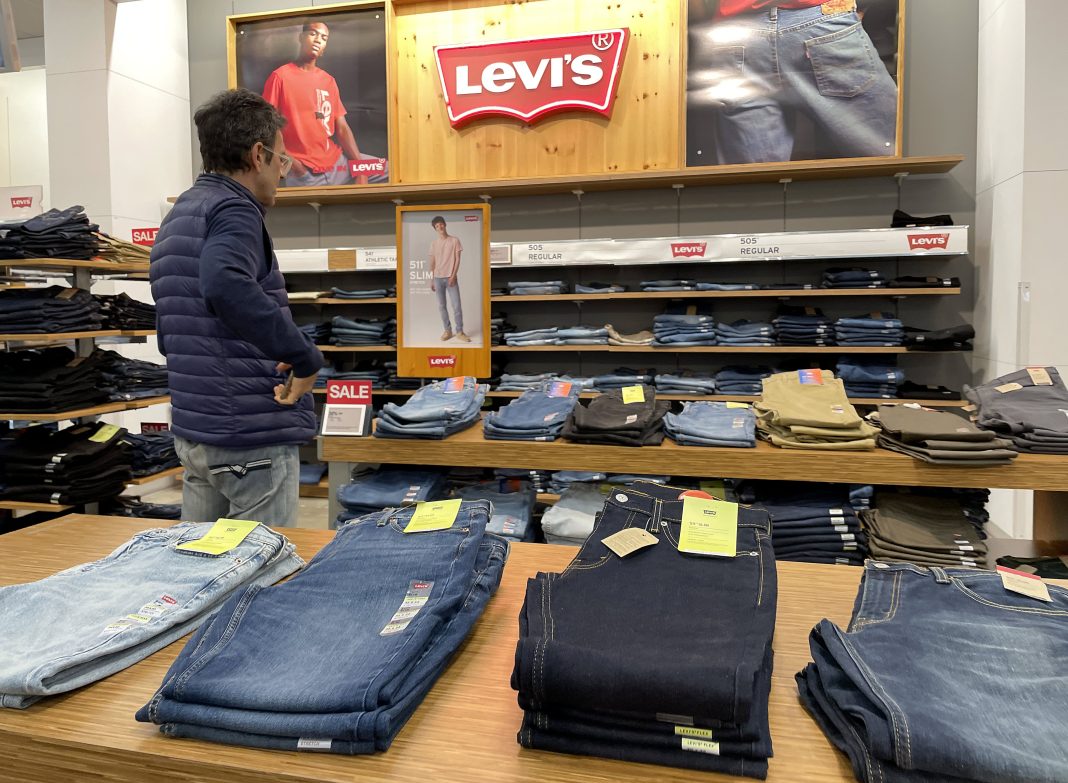In the vibrant world of fashion, where trends ebb and flow like tides, Levi Strauss & Co. finds itself navigating a complex landscape. Recently, the denim giant announced its intention to potentially divest its Dockers brand, a move that underscores the challenges the company faces amidst shifting consumer preferences. While Levi’s core denim line experienced a 5% sales increase in the latest fiscal quarter—the most significant surge in two years—overall revenue stagnated, falling short of Wall Street’s expectations. This juxtaposition highlights a critical juncture for Levi’s, as it aims to redefine its identity in a rapidly evolving market.
Levi’s reported a net income of $20.7 million for the quarter ending August 25, translating to 5 cents per share, a notable improvement from the previous year’s $9.6 million or 2 cents per share. However, while earnings per share of 33 cents exceeded the anticipated 31 cents, the company’s total revenue of $1.52 billion was slightly below the expected $1.55 billion. As a result, shares plummeted over 8% in after-hours trading—a stark reminder of the volatility inherent in the retail sector.
The crux of Levi’s struggles can be traced back to its Dockers brand, which once thrived as a staple of American wardrobes but has seen its popularity wane in recent years. Launched in 1986 to provide consumers with khakis as an alternative to denim, Dockers has become increasingly overshadowed by the broader Levi’s brand, which has successfully evolved into a lifestyle label offering a diverse range of products. During the past quarter, Dockers’ sales plummeted by 15% to $73.7 million, a stark contrast to the 19% growth experienced by Beyond Yoga, the athleisure brand Levi’s acquired in 2021.
In an interview, Levi’s Chief Financial Officer Harmit Singh elaborated on the rationale behind the potential sale of Dockers, stating, “Over the last couple of years, the brand has underperformed. We felt this was the right decision for the long term. Our view financially is that the exit of Dockers will improve the company’s overall margins and also minimize volatility in top-line growth.” Singh’s insights resonate with industry experts, who often cite the necessity of brands to adapt and pivot in response to consumer behavior, especially in a post-pandemic world where comfort and flexibility are paramount.
Amid these challenges, Levi’s is not merely standing still. The company is making significant strides in enhancing its profitability through a strategic push toward direct-to-consumer sales. This approach has proven fruitful, as evidenced by a 10% increase in direct channel sales during the quarter, with e-commerce alone surging by 16%. Currently, direct sales account for 44% of Levi’s total revenue, and the company is ambitiously targeting a growth trajectory that will see this figure rise to 55%. This strategy not only bolsters profit margins—thanks to the elimination of intermediary wholesalers—but also facilitates a deeper connection with consumers through data collection and tailored marketing.
A noteworthy example of Levi’s innovative marketing approach is its recent collaboration with global superstar Beyoncé. The partnership, which includes a campaign featuring Beyoncé in iconic 501 jeans and a classic white tee, exemplifies Levi’s commitment to remaining culturally relevant. As CEO Michelle Gass aptly puts it, “Part of the success recipe for Levi’s has been and will continue to be us living in the center of culture.” This collaboration not only revitalizes the brand’s image but also capitalizes on the cultural cachet of Beyoncé, showcasing how strategic partnerships can drive engagement and sales.
However, the company’s challenges are not confined to its product lines. Levi’s European sales have outperformed expectations, recording $406.6 million, surpassing estimates of $392 million. In contrast, sales in the Americas and Asia fell short of projections, with the Americas generating $757.2 million, below the anticipated $789.2 million. Singh pointed to a cybersecurity breach affecting one of Levi’s largest wholesale customers in Mexico as a contributing factor to this downturn, indicating that external factors can significantly impact sales performance.
In Asia, the company faced its own set of hurdles. Although the region constitutes only about 2% of Levi’s overall business, it represents an area of untapped potential, especially in the wake of recent leadership changes aimed at revitalizing operations. Singh remains optimistic, stating, “We still believe in the long-term potential of China,” despite acknowledging the macroeconomic headwinds affecting the market.
As Levi Strauss & Co. charts a course through these turbulent waters, the potential sale of Dockers could serve as a pivotal moment in the company’s evolution. By streamlining its brand portfolio and focusing on direct-to-consumer strategies, Levi’s is positioning itself to meet the demands of a changing marketplace. The interplay of cultural relevance, strategic partnerships, and a keen understanding of consumer behavior will be crucial as the denim maker strives to maintain its iconic status while adapting to the whims of modern fashion.

